
Johnny Ramone street mural by Austin artist Fe De Rico
‘Mouth To Mouth’ was a short-lived MTV talk show hosted by stand-up comic Steve Skrovan. This was aired in 1988. Viva Johnny, Joey, Dee Dee and Marky.

Johnny Ramone street mural by Austin artist Fe De Rico
‘Mouth To Mouth’ was a short-lived MTV talk show hosted by stand-up comic Steve Skrovan. This was aired in 1988. Viva Johnny, Joey, Dee Dee and Marky.
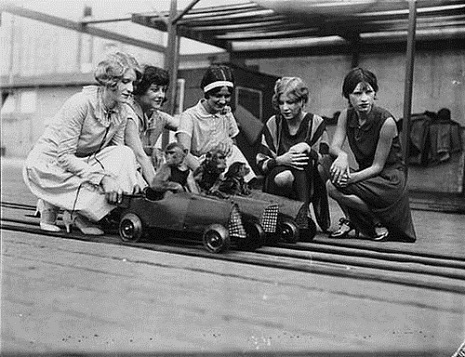
I can’t find any info on Monkey Go Round other than it was made in Germany and released in the States by the venerable Castle Films in 1961. There’s no mention of the movie in the Castle Catalog. If anybody knows anything about the history of this little gem, please share.
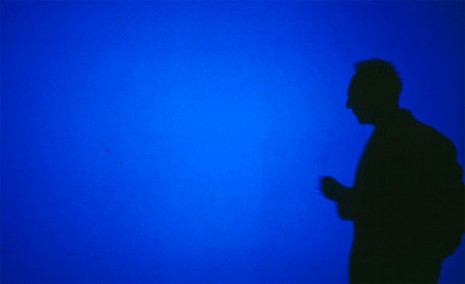
Derek Jarman died too soon, and his loss has been immeasurable to world cinema.
I first met Derek in 1989, when he was interviewed about his work, by Richard Jobson, on a BBC lunchtime magazine program. It was a coup to get him, more so as he openly discussed AIDs, and his own HIV status, at a time when large sections of the media were spouting hatred and bigotry against the gay community. At the time, Jarman was in Glasgow for an exhibition he was presenting at the Third Eye Center, the show consisted of homophobic front pages culled from tabloid newspapers, plastered on the walls around a tarred and feathered, barbed-wire cage, inside which, two young men lay naked on a bed. The effect was powerful and moving.
Steve Carr, a film-maker and on-line content editor, has made this excellent new short film about Jarman, and as he exclusively tells Dangerous Minds:
The film was part of a work related project. We were asked to produce something that has or had a huge influence in our own life/lives. Derek Jarman’s work influenced my interest in queer art in the late 80s at a time when Britain was dominated by anti-AIDS rhetoric and a Thatcherite run government. My short film is composed of clips from many of Derek’s films and documentaries, compressed into a 10 minute short about his life and the difficulties people had from finding funds to show their work. Derek, being a film maker and being HIV positive was an example of the prejudice he faced in this right-wing Britain of the time.
Bonus clip of Jarman’s Super 8 footage after the jump…
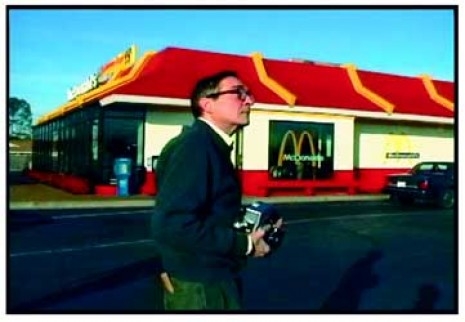
This Tuesday night, a very unique program at the Cinefamily movie theater in Hollywood: In conjunction with the big exhibit at LACMA, “William Eggleston: Democratic Camera – Photographs and Video, 1961-2008” there’ll be a screening of Eggleston’s seldom seen B&W video work, Stranded in Canton:
Legendary photographer William Eggleston, working with filmmaker Robert Gordon, recently edited thirty hours of video footage he’d shot in 1974 of friends, family, and eclectic characters encountered in the bars and back roads of his hometown of Memphis, as well as New Orleans and the Delta region. The hypnotic result is Stranded in Canton, a film that consistently teeters on the edge of dream and nightmare states. Its nocturnal visions of bar denizens, musicians (including Furry Lewis), transvestites and a variety of semi-crazies comes off like a Cassavetes all-nighter filmed by David Lynch at his most unsettling: faces loom out of darkness, shot in infrared, displaying pale glowing skin and deep black eyes. There’s even a real-life geek-off (yes, the type with chickens)! And it’s mesmerizing, partly thanks to the outsized characters who fill the screen, and partly because Eggleston turns the “home movie” into art—Father of Modern Color Photography he may be, but he kicks just as much ass in eerie B&W, wrenching glorious images out of the early Sony Porta-Pak to conjure a febrile, desperate atmosphere that captures the Southern Gothic with an extraordinarily raw and rambling intimacy.
11/2, 8pm Tickets - $12/$8 for members
Below,footage from Stranded in Canton of Alex Chilton and Sid Selvidge playing “My Rival” in Memphis, TN.
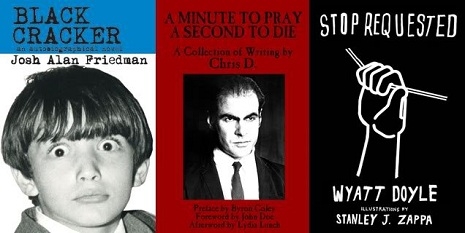
‘Tales Of Times Square’ author Josh Alan Friedman has written a delightfully bent memoir of what it was like being a white kid attending an all-Black elementary school in Long Island during the early 1960’s. In ‘Black Cracker’, Friedman combines his usual sardonic humor with a surprisingly sweet tone and the result is both very funny and touching. It also deals with race in America by hewing to real life details, avoiding broad sentiment and proselytizing. The truth is really in the telling. This is a very funny book and an immensely satisfying one. Who knew that Josh could be such a warmhearted ol’ fuck.
South School, 1962: The last segregated school in New York. Their teacher moonlights on ‘Lawrence Welk’, the lady principal wears boxing gloves, and the student body is all-Negro . . . except for first grader Josh Friedman. He’s white, but he’s working on it. Center stage in the unflinching and frequently hilarious funhouse tour of Friedman’s Long Island boyhood is a rogues’ gallery that includes Bobo, precocious third-grade dropout and boy prince of the ghetto; his bumbling (and alarmingly potent) ne’er-do-well Uncle Limpy; Mumsy, the smelliest shoeshine boy in Penn Station; Mrs. O’Leary, the menacing Irish nanny; her son, Drake, an etiquette-obsessed, switchblade-totin’ clammer overwhelmed by the tides of racial progress; and the impoverished Wilshires, the bone-white, nigger-hatin’-est crackers in town. At once heartbreaking and hysterically funny, ‘Black Cracker’ delivers a fearless account of adventures in the now-forgotten poor Black shantytowns of Long Island, exploring the singular ugliness of racism, the intrigue of janitorial whodunits, the tragic limits of friendship, and the inexplicable seductive powers of croco-print footwear.
‘Black Cracker’ is published by Wyatt Doyle/New Texture. Wyatt has also unleashed Chris D.‘s (The Flesheaters) ‘A Minute To Pray, A Second To Die’ and his own collection of short stories called ’ Stop Requested’. Chris D.‘s anthology is comprised of his song lyrics, poetry, short stories, dream journal entries and excerpts from as-yet-unpublished novels. Chris was in the heat of the action during L.A.‘s 1970’s punk explosion and his book is street smart and unruly, filled with noirish surrealism and rock hard beatitudes that ache with yearning, anger and red hot eroticism. Shelve next to Patti Smith and Nick Cave.
Doyle’s ‘Stop Requested’ is a series of rueful, witty and occasionally heartwrenching stories about the fellow passengers that Doyle observes while riding the bus in L.A.. These are folks living on the margin between nothing and everything, stuck between Rodeo Drive and The Highway To Nowhere. Doyle’s gift is in capturing those tiny dramatic moments that linger for a brief moment on the periphery of vision. He has a Zen-like ability to cut through the bullshit and get to the heart of the matter (and everything matters), he finds consequence in the inconsequential. He’s Bukowski without the nasty streak. And he’s real good. Profusely illustrated with drawings by Stanley J. Zappa . Highly recommended.
Support indie publishers. Buy these suckers.
Completely unrelated to his book ‘Black Cracker’ (but so much fun I had to include it here), Josh has written a musical based on the life of Ed Wood Jr. Here’s an excerpt for your amusement.
“Bela Lugosi” by Josh Alan Friedman (BLACK CRACKER) from New Texture on Vimeo.

Caught this lil’ masterpiece of understatement on the Drudge Report this morning:
Armed security guards will be on hand at 36 unemployment offices around Indiana in what state officials said is a step to improve safety and make branch security more consistent.
No specific incidents prompted the action, Department of Workforce Development spokesman Marc Lotter told 6News’ Norman Cox. Lotter said the agency is merely being cautious with the approach of an early-December deadline when thousands of Indiana residents could see their unemployment benefits end after exhausting the maximum 99 weeks provided through multiple federal extension periods.
“Given the upcoming expiration of the federal extensions and the increased stress on some of the unemployed, we thought added security would provide an extra level of protection for our employees and clients,” he said. [Emphasis added]
Increased stress? Is this asshole kidding?
I guess they’re expecting there will be some people who won’t react too kindly to being told they and their children are being left to starve come December.
This is how we live now. If you think it’ll get better by voting for Republicans—or not voting at all—tomorrow, you are sorely fucking mistaken.
Unemployment Offices To Add Armed Guards: 36 Offices Beefing Up Security Before Benefits Set To End (WRTV: The Indy Channel)
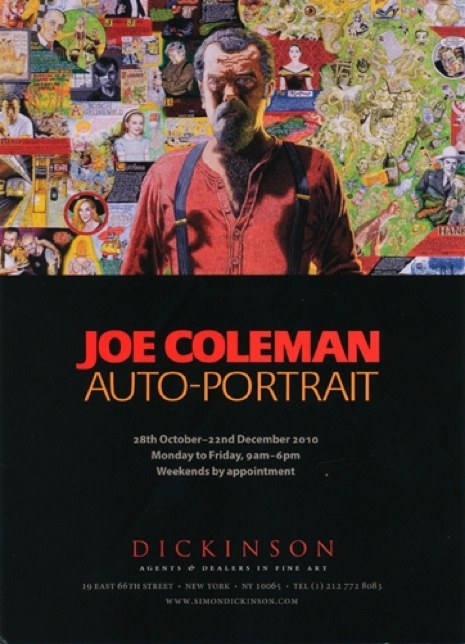
Dangerous Minds pal, the great painter, Joe Coleman, has a rare New York art show currently hanging at the prestigious Dickinson New York gallery on the Upper East Side. Only a fool or a philistine in the NYC-area would pass up the chance to see Joe’s work in person, including the new 7-feet tall self-portrait—which took three years to paint—described in the below article from the Wall Street Journal (Trust me, during the last big NYC Coleman exhibit in 2006, on the final day of the show, I hobbled on a train from NJ with crutches and then painfully grimaced as I took ever single step to the gallery and back home. Was it worth it? YOU BET IT WAS WORTH IT!):
The images, which occupy dozens of amorphous panels, veer from the sweetly sentimental—the cartoon bunnies and kittens that fill his wife Whitney Ward’s bedtime thoughts—to nightmarish visions grotesque enough to evoke both 1950s EC Comics and 15th-century Hieronymous Bosch. It’s a phantasmagorical kaleidoscope that grows hypnotic with its minute detail.
“You almost feel like you’re being sucked into it,” Mr. Coleman said. The work, “A Doorway to Joe,” is the centerpiece of “Joe Coleman: Auto-Portrait,” an exhibit opening Thursday at Dickinson New York gallery on the Upper East Side. “You spend too much time, you get what [Italian filmmaker] Dario Argento depicted in ‘The Stendhal Syndrome.’ You ever see that one? It’s this idea that staring at the paintings would make certain people feel like they become part of the painting.”
Mr. Coleman can appreciate that scenario. He’s lived the painting. Once notorious for his literally explosive performance-art spectacles, which occasionally made the New York City police logs in the 1970s and ‘80s, he has increasingly been lauded for his paintings. In 2007, he was feted at one-man shows in Paris and Berlin, cutting a figure Ms. Ward, an actress and photographer, described as “Part Tammany Hall, part Wild West—he’s a handsome and omniscient walking ghost of old America.”
Not long after the exhibit at Berlin’s KW Institute, Mr. Coleman had a chat with his patron, the collector Mickey Cartin, who agreed to buy “Doorway” in advance, mindful that it would take three years to complete. Mr. Coleman finished roughly one square inch of space each day, using a jeweler’s lens to magnify and discover “the spaces between the spaces I’d already painted.” It was a laborious task, one that often entailed brushes with as few as two horse hairs. “It puts the pain back in painting,” he said. “I use my pinkie to balance the whole rest of my wrist. And you have to hold your breath as well while you’re doing it.”
The concept of suffering is indivisible from Mr. Coleman’s desire to make art. His first pieces were drawings made during services at St. Mary’s Roman Catholic Church in his native Norwalk, Conn. “My mom gave me a pad and crayons and a pencil,” he recalled, “and around the church are these scenes of Christ being crowned with thorns and crucified. I just started drawing them. The only crayon I used was the red crayon with the blood. The subject matter has not really changed that much,” he said. “I’m still struggling with these ideas of good and evil, and this idea that there’s something holy in violence. That’s the essence I was spoonfed from childhood.”
Mr. Cartin, in whose loft the work usually hangs—in the company of contemporary and 15th- and 16th-century art—first met Mr. Coleman 20 years ago, when the artist was driving a cab. “I simply believed in him, not only as a totally lovable and eccentric character, but as a very committed artist,” Mr. Cartin said. “He asks so much of himself, and it shows in the way his work has evolved. He is a painter-storyteller, and the stories are not easy. He loves his work, but each painting is a significant internal struggle for him. He keeps no secrets.”
That’s true in conversation, as well. Mr. Coleman, who projects a personal warmth that balances his psychic intensity, recounted the story behind one of the panels, an image of a “Jap Hand,” chopped off a Japanese soldier by an American serviceman in World War II. As a boy, Mr. Coleman became an expert at breaking into a locked cabinet in his father’s den. On one such occasion, while his father was out drinking at a bar, he found more than he bargained for lurking in a stash of pornography and military mementos. “It was this picture of a GI holding the head of a Japanese soldier, kind of proudly, and when I looked at it more closely I saw that it was my father.”
Some things, once seen, can never be unseen. And that’s exactly what Mr. Coleman wants to show. “It’s like an archeological dig,” he said, “but internally.”
The Walking Ghost of Old America: Cartoon Kittens, Serial Killers, Lovers and Literary Lions: Joe Coleman Paints a Journey Through His Labyrinthine Mind (WSJ)
Joe Coleman’s incredible portrait of Harry Houdini is on display at the Jewish Museum’s exhibit, Houdini: Art and Magic until March 27th, 2011.
Thank you, Whitney Ward!
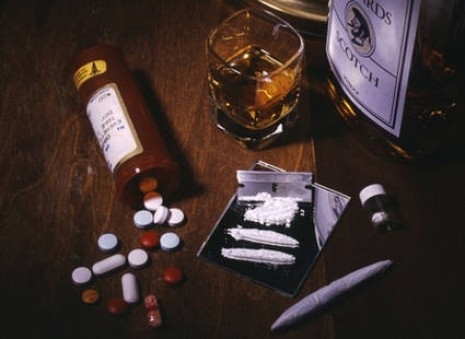
The Guardian today reports that alcohol is the most dangerous drug in the U.K., beating heroin and crack cocaine into 2nd and 3rd place. This according to a study published by former government drugs adviser, David Nutt, and his colleagues from the Independent Scientific Committee on Drugs. The Guardian goes on to say:
Today’s paper, published by the respected Lancet medical journal, will be seen as a challenge to the government to take on the fraught issue of the relative harms of legal and illegal drugs, which proved politically damaging to Labour.
Nutt was sacked last year by the home secretary at the time, Alan Johnson, for challenging ministers’ refusal to take the advice of the official Advisory Council on the Misuse of Drugs, which he chaired. The committee wanted cannabis to remain a class C drug and for ecstasy to be downgraded from class A, arguing that these were less harmful than other drugs. Nutt claimed scientific evidence was overruled for political reasons.
The new paper updates a study carried out by Nutt and others in 2007, which was also published by the Lancet and triggered debate for suggesting that legally available alcohol and tobacco were more dangerous than cannabis and LSD.
Today’s study offers a more complex analysis that seeks to address the 2007 criticisms. It examines nine categories of harm that drugs can do to the individual “from death to damage to mental functioning and loss of relationships” and seven types of harm to others. The maximum possible harm score was 100 and the minimum zero.
Overall, alcohol scored 72 – against 55 for heroin and 54 for crack. The most dangerous drugs to their individual users were ranked as heroin, crack and then crystal meth. The most harmful to others were alcohol, heroin and crack in that order.
Nutt told the Guardian the drug classification system needed radical change. “The Misuse of Drugs Act is past its sell-by date and needs to be redone,” he said. “We need to rethink how we deal with drugs in the light of these new findings.”
For overall harm, the other drugs examined ranked as follows: crystal meth (33), cocaine (27), tobacco (26), amphetamine/speed (23), cannabis (20), GHB (18), benzodiazepines (15), ketamine (15), methadone (13), butane (10), qat (9), ecstasy (9), anabolic steroids (9), LSD (7), buprenorphine (6) and magic mushrooms (5).
The authors write: “Our findings lend support to previous work in the UK and the Netherlands, confirming that the present drug classification systems have little relation to the evidence of harm. They also accord with the conclusions of previous expert reports that aggressively targeting alcohol harm is a valid and necessary public health strategy.”
Nutt told the Lancet a new classification system “would depend on what set of harms ‘to self or others’ you are trying to reduce”. He added: “But if you take overall harm, then alcohol, heroin and crack are clearly more harmful than all others, so perhaps drugs with a score of 40 or more could be class A; 39 to 20 class B; 19-10 class C and 10 or under class D.” This would result in tobacco being labelled a class B drug alongside cocaine. Cannabis would also just make class B, rather than class C. Ecstasy and LSD would end up in the lowest drug category, D.
The text of the full report can be read here.
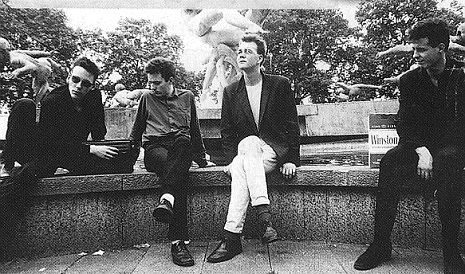
Scottish art punks Fire Engines produced a handful of singles, a couple of which were modest hits in the UK, and one album in the early 1980’s. Clearly influenced by New York No Wave bands like The Contortions and the neurotic Jersey jungle music of The Feelies, Fire Engines were still very much their own beast. The band consisted of David Henderson on vocals and guitar, Murray Slade on guitar, bassist Graham Main and drummer Russell Burn. Dissonant, funky, angry, sweet and ahead of its time, you could drop their tunes into a mix with The Strokes, Of Montreal and TV On The Radio and they’d be right at home.
No Wavy ‘Get Up And Use Me’ sounds like The Raybeats knockin’ heads with Tom Verlaine. Nervous and twangy with a Verlaine whine. Recently covered by Franz Ferdinand.
A compilation of Fire Engine tracks is available here.
Fire Engines on British TV after the jump…
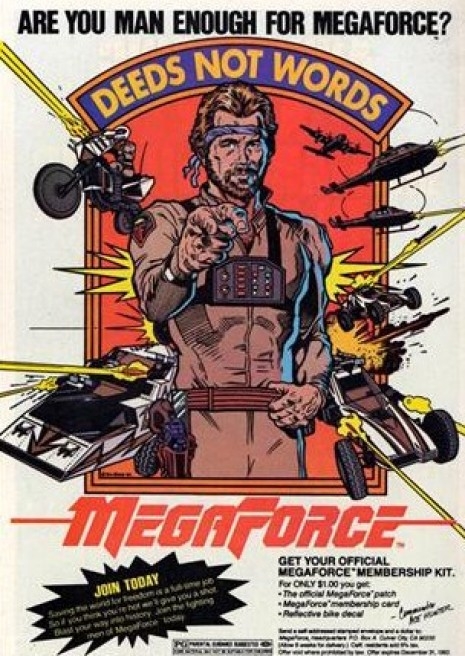
MegaForce (1982)
The combination of ultra-cheesy blue-screen effects, a motorcycle that looks like it’s made of Styrofoam and garbage can lids, gold lamé jumpsuit and the actors’ goofy reaction shots make this scene from Megaforce a classic of ‘so bad it’s good’ cinema. A cult favorite - Matt Stone and Trey Parker paid homage to Megaforce in Team America: World Police and an episode of South Park - it’s inexplicably never been released on DVD. I’d love to hear director Hal Needham’s commentary.
“Megaforce, a phantom Army of super elite fighting men whose weapons are the most powerful science can devise”
The appropriately goofy theme song was written by Jerrold Immel.
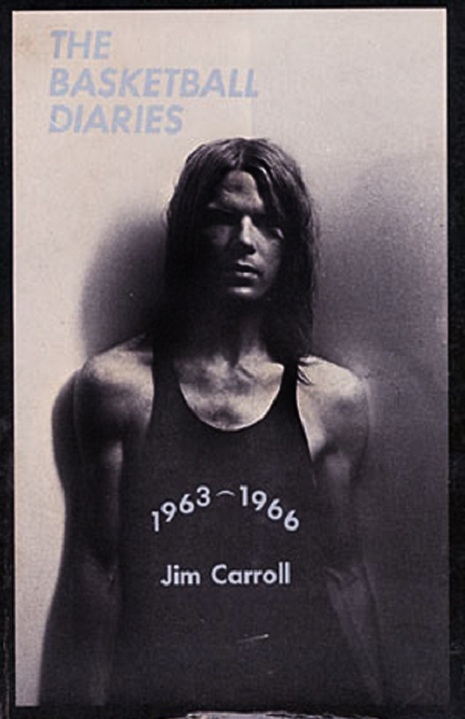
Jim Carroll reading the ‘Basketball Diaries’ part 2 of 4.
I will be posting parts 3 and 4 in the coming week.
Previously on Dangerous Minds: Jim reading ‘Basketball Diaries’ Part 1 here.

An old pal, the writer Tommy Udo, alerted me to 1970’s Soviet Jazz Funk, which led me to check up on how Jazz developed in the USSR from the 1920s-70s.
Since its beginning in the 1920s, Russian Jazz has been in constant flux between prohibition, censorship and state sponsorship - dependent on who was leader and their domestic, foreign, economic and political policies. Jazz came to Russia via Valentin Parnakh, a musician who caught the jazz bug when he saw the Louis Mitchel Jazz Kings, while in exile in Paris in 1921.
On 1st October, Parnakh returned to Moscow and performed his own October Revolution with his newly formed jazz band, Pervyj v RSFSR Kscentričeskij Orkestr džaz-band Valentina Parnakha. Their first gig was slated, but that didn’t count for much as Parnakh had imported Jazz into Russia at just the right time, as the State’s New Economic Policy (NEP) encouraged “private initiatives into Soviet economic policies,” which meant a sharing of both cultural ideas and finance. This openess led to a Russian Jazz boom through the 1920s, which the government attempted to regulate and “professionalize,” even sending a cultural delegation to America.
This incredibly fluid cultural exchange ceased when Stalin (prior to his radical Five Year Plan) enforced a Proletarian view of the Arts and Culture, that was “anti-modern, anti-Western, anti-jazz and often also anti-classical.” Stalin feared outside influence, in particular music, which he believed could undermine the revolution. For a time, Jazz was tolerated, and became a focus for heated debate; but when Maxim Gorky returned from Fascist Italy, at Stalin’s invitation, the writer penned a controversial essay that “equated jazz with homosexuality, drugs and eroticism,” and the music was slowly forced underground.
Jazz and other forms of popular music became the signature tune for the dissident and liberal intelligentsia. By the late 1960s and early 1970s, Jazz was making its reappearance, with recordings made in secret, usually at night amongst like-minded musicians, keen to adopt and experiment with other musical forms and influences, especially Funk and Soul from America. Few of these Soviet Jazz-Funk recordings remain from the vast number of recorded, but a selection of great tracks can be found here.
With thanks to Tommy Udo
Bonus clips of Soviet Jazz Funk after the leap…

Kristen Hallenga
Coppafeel is a website founded by breast cancer survivor Kristen Hallenga.
We are hitting home the importance of boob examination in younger women, to reduce the incidence of late detection or misdiagnosed breast cancer. It’s simple, get to know your boobs; the sooner you do, the sooner you’ll notice any changes. Doing so could save your life; as early detection is the key to successfully beating this disease.
Coppafeel’s breast cancer campaign is naughty, fun and very effective.
Bangbabes Boob Hijack from Coppafeel on Vimeo.

Keith Richards’ raunchy and thoroughly entertaining autobiography ‘Life’ is the best rock memoir I’ve read since Dylan’s ‘Chronicles’. Shambling and shameless, ‘Life’ stumbles along like an elegant drunk, feet in the gutter and head in the stars. Lock the doors and hide the children.
I came across this video from 1985 of Keith sitting in with David Johansen (Buster Poindexter) at NYC bar Tramps. For many years Tramps was my second home. Its owner Terry Dunne is a dear friend and former manager of my band The Nails. Back in the 80’s, Tramps was one of the hippest joints in Manhattan and arguably the best blues club in the country. Legends like Big Joe Turner, Lightening Hopkins and Esquerita played its hallowed stage. I played the Joker Poker machine, wired to the gills.
In this truly rare video, Delbert McClinton joins David and Keith. Joe Delia is on keyboards.
The person who uploaded this to Youtube goes by the moniker fxpope. I’m wondering if that’s the same F.X. Pope that directed new wave porn film Nightdreams and The Nails’ first video. Mr. Pope is also known by his birth name Francis Delia, Joe’s brother. Francis, is that you?